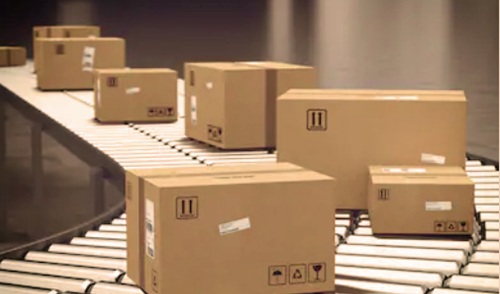The paint industry in India has entered 2025 on a bright note—literally and figuratively. Driven by a booming construction sector, rising disposable incomes, urban lifestyle changes, and strong demand from both decorative and industrial segments, India’s paint market is one of the fastest-growing in the world. In fact, India’s paint industry has evolved from a commodity-based business to a technology- and brand-driven market, with innovation, sustainability, and digitalization leading the way.

Market Overview
As of 2025, the Indian paint industry is estimated to be worth over ₹85,000 crore (around USD 10 billion), with a CAGR of 10–12% projected over the next five years. The market is dominated by decorative paints, which contribute nearly 75% of the total sales, while industrial coatings—used in automotive, marine, and protective applications—make up the rest.
The major players—Asian Paints, Berger Paints, Kansai Nerolac, AkzoNobel India, and Indigo Paints—continue to invest heavily in product innovation, distribution expansion, and digital retail experiences. Alongside them, several regional brands and niche eco-friendly startups are entering the scene, creating healthy competition.
Key Growth Drivers in 2025
- Housing and Infrastructure Boom
The Government of India’s focus on “Housing for All”, smart cities, and infrastructure development continues to fuel decorative paint demand. The real estate sector’s revival, particularly in Tier-II and Tier-III cities, has resulted in strong sales of interior and exterior paints. Moreover, the repair and repainting cycle has shortened due to aesthetic preferences, further boosting demand.
- Rising Urbanization and Lifestyle Upgrades
Urban consumers are spending more on home beautification and personalized interiors. Decorative paints—like textured finishes, metallic paints, and washable emulsions—are in high demand. Even rural areas are witnessing growth, driven by aspirational purchasing and better access to branded paints through rural dealerships and e-commerce channels.
- Shift Toward Premium and Eco-Friendly Paints
Consumers are becoming more aware of environmental and health impacts. This has led to a surge in low-VOC, odor-free, anti-bacterial, and eco-friendly paints. Leading brands have introduced water-based paints, solar-reflective coatings, and heat-resistant paints that enhance sustainability and energy efficiency.
- Technological Innovations
Paint manufacturers in India are rapidly adopting nanotechnology, automation, and AI-driven color-matching tools. Smart paints that resist dust, bacteria, and weather damage are no longer futuristic—they’re mainstream. In 2025, technology plays a key role not only in product formulation but also in retail engagement—via AR-based “visualize your wall” apps and digital color studios.
- Industrial and Automotive Demand
The industrial coatings segment is witnessing steady growth due to increased manufacturing activity under the “Make in India” initiative and the expansion of the automotive and construction equipment sectors. Industrial paints with corrosion protection, heat resistance, and anti-rust properties are gaining traction in manufacturing, energy, and infrastructure projects.
Competitive Landscape
The Indian paint market remains highly consolidated at the top but fragmented at the regional level.
- Asian Paints continues to lead with a market share exceeding 35%, expanding its product portfolio and entering related categories like waterproofing and home décor solutions.
- Berger Paints focuses on waterproofing, texture finishes, and rural expansion.
- Kansai Nerolac maintains its stronghold in automotive coatings, partnering with major OEMs.
- AkzoNobel India emphasizes sustainability and premium segment innovation.
- Indigo Paints and Shalimar Paints are gaining ground through aggressive marketing and region-specific strategies.
The rise of local brands and private labels in rural areas adds competition, especially in the economy segment where price sensitivity remains high.
Challenges Facing the Industry
Despite growth, the industry faces some headwinds:
- Raw material cost volatility, especially for crude oil derivatives like titanium dioxide and resins, can pressure profit margins.
- Environmental regulations are tightening, forcing companies to invest in green technologies.
- Logistics and distribution costs remain high due to India’s vast geography.
- Rural market dependence on monsoon performance still affects short-term demand patterns.
However, with digital supply chain optimization and innovation in product formulation, these challenges are being gradually addressed.
Emerging Trends in 2025
- Waterproofing and Surface Protection: Paint companies are diversifying into waterproofing, wood coatings, and construction chemicals.
- Digital Retail Experience: Virtual color consultation, e-commerce paint selection, and doorstep delivery are redefining consumer experience.
- Smart and Functional Paints: Reflective coatings, anti-microbial walls, and energy-efficient paints are gaining mainstream acceptance.
- Tier-II and Rural Penetration: Smaller towns are becoming major growth engines for both decorative and industrial paints.
- Sustainability and Circular Economy: Use of recycled packaging, renewable raw materials, and reduced carbon footprints is a key corporate priority.
Future Outlook
By the end of 2025, India’s paint industry is expected to cross the ₹1 lakh crore mark, supported by innovation, green chemistry, and strong demand from housing and infrastructure. The next wave of growth will come from:
- Deeper rural penetration and affordable premium products.
- Expansion into value-added services like painting solutions and color consultancy.
- Greater use of AI, data analytics, and automation to predict demand and personalize customer journeys.
Conclusion
The Indian paint industry in 2025 is a perfect blend of art, science, and business strategy. As consumers demand beauty with sustainability, and the government continues to invest in infrastructure and housing, the industry’s canvas looks brighter than ever. Companies that innovate, digitize, and embrace sustainability will not just survive—they will paint India’s growth story in bold, vibrant colors.

